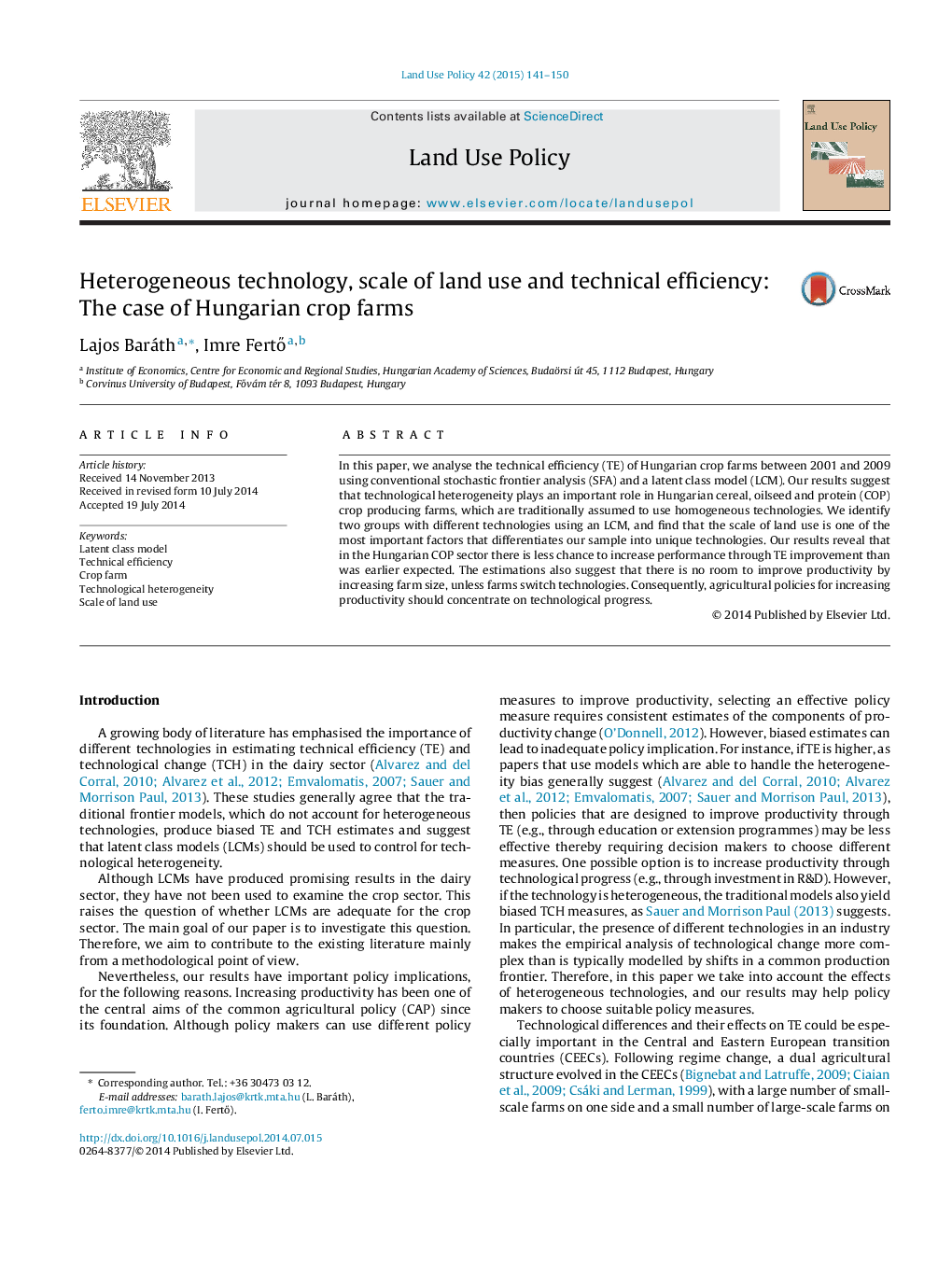| Article ID | Journal | Published Year | Pages | File Type |
|---|---|---|---|---|
| 6548366 | Land Use Policy | 2015 | 10 Pages |
Abstract
In this paper, we analyse the technical efficiency (TE) of Hungarian crop farms between 2001 and 2009 using conventional stochastic frontier analysis (SFA) and a latent class model (LCM). Our results suggest that technological heterogeneity plays an important role in Hungarian cereal, oilseed and protein (COP) crop producing farms, which are traditionally assumed to use homogeneous technologies. We identify two groups with different technologies using an LCM, and find that the scale of land use is one of the most important factors that differentiates our sample into unique technologies. Our results reveal that in the Hungarian COP sector there is less chance to increase performance through TE improvement than was earlier expected. The estimations also suggest that there is no room to improve productivity by increasing farm size, unless farms switch technologies. Consequently, agricultural policies for increasing productivity should concentrate on technological progress.
Related Topics
Life Sciences
Agricultural and Biological Sciences
Forestry
Authors
Lajos Baráth, Imre FertÅ,
